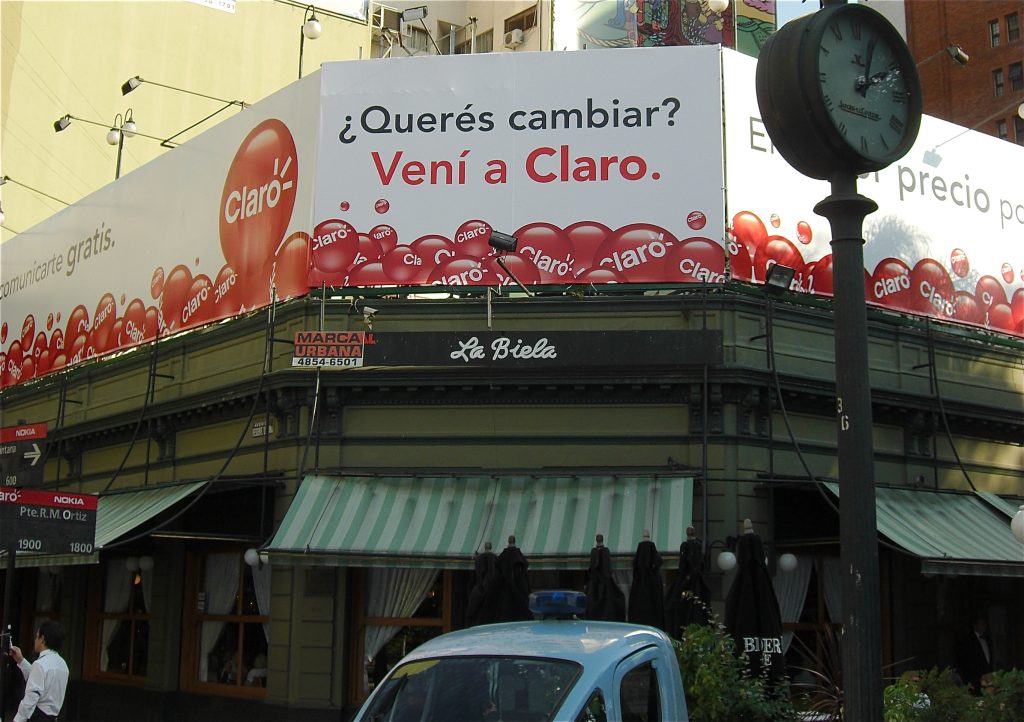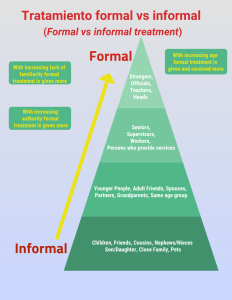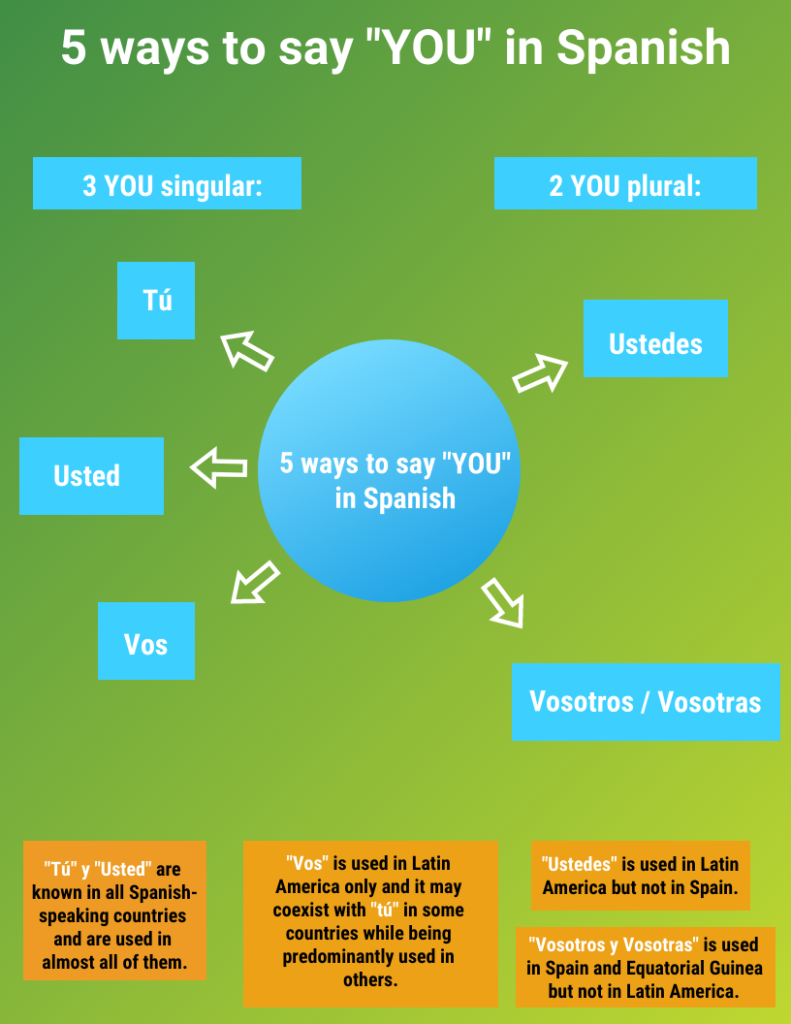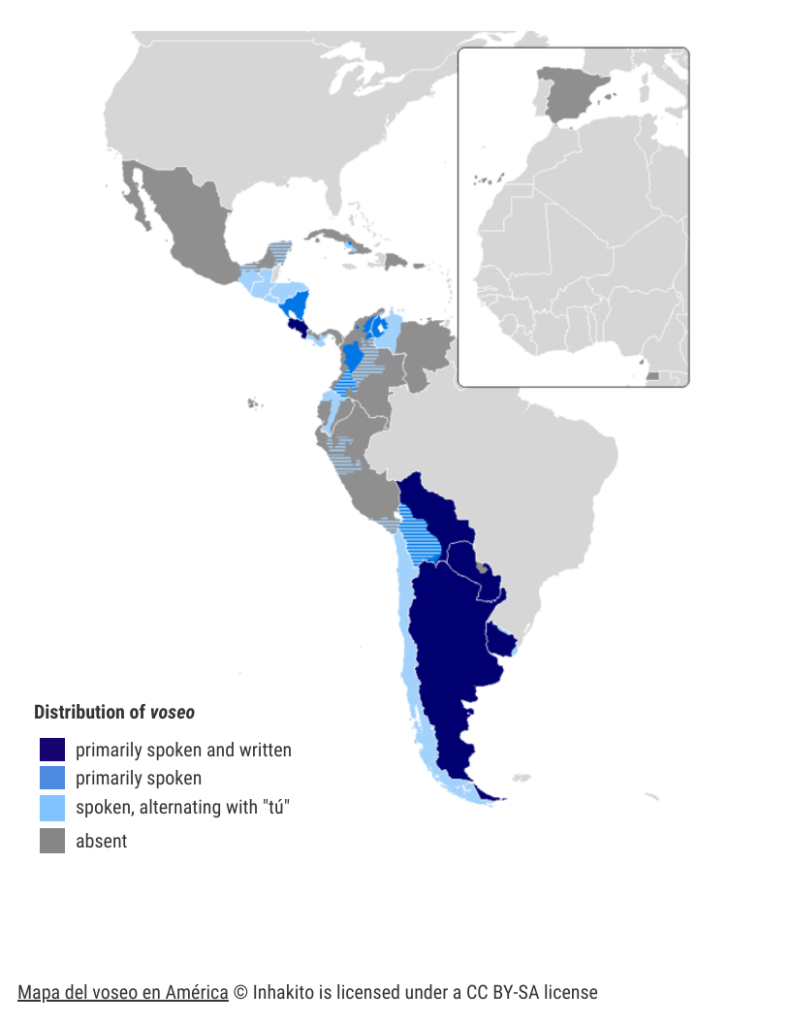Unidad 6 – Segunda Parte (Part 2)
Vocabulario
(Vocabulary)
Las vacaciones (Holidays and vacations)
Para hablar de las vacaciones, the following vocabulario is very useful:
| Actividades: | Medios de transporte: | Alojamiento / Hospedaje: |
| ir de vacaciones (to go on vacation) | el avión (the plane) | el hotel (hotel) |
| ir al extranjero (to go abroad) | el tren (the train) | la habitación (room) |
| viajar dentro del país (to travel within the country) | el autobús, el bus (the bus) | el albergue, hospedaje (hostel) |
| volar (ue) (to fly) | el taxi (the taxi) | la casa de visita, de huéspedes (guesthouse) |
| comprar un boleto, billete (to buy a ticket) | la bicicleta (the bicycle) | la casa de amigos (friends house) |
| reservar (i) (to make a reservation) | el metro (the metro, subway) | |
| hospedarse, alojarse (to stay at) | el transbordador, el ferry (the ferry) | Lugares: |
| visitar (to visit) | el barco (the boat) | parques nacionales (national parks) |
| arrendar (ie), alquilar (to rent) | la barca, el bote (small boat) | monumentos naturales (natural monuments) |
| viajar en/por auto, carro (to travel by car) | el crucero (the cruise) | sitios históricos (historic sities) |
| conocer gente, lugares (to know people, places) | el camión (the truck) | maravillas naturales (natural wonders) |
| tomar fotos (to take pictures) | el auto, carro (the car) | patrimonio de la humanidad (world heritage) |
| explorar (to explore) | a pie (by foot) | patrimonio cultural (cultural heritage) |
| mandar, enviar (ie) postales (to send postcards) | ||
| acampar (to camp) | ||
| ser un/una turista (to be a tourist) | ||
| hacer actividades: | ||
| deportivas (sport activities) | ||
| urbanas (urban activities) | ||
| ecológicas (eco activities) | ||
| gastronómicas (gastronomic activities) | ||
| de diversión (fun activities) |
Cómo usarlo
(How to use it)
When talking about transportation en español the following prepositions are used as follows:
| por / en (by) | en (by) | a |
| avión | autobús | a pie (on foot) |
| tren | taxi | |
| metro | bicicleta | |
| ferry | bote | |
| barco | crucero | |
| auto | camión |
- Yo viajo al extranjero por/en avión.
- Me encanta explorar parques nacionales por/en auto.
- Cuando hago actividades urbanas me gusta conocer diferentes lugares a pie .
- Mis vacaciones favoritas son de tipo ecológicas y me gusta explorar la naturaleza en bicicleta.
¡A practicar!
Tipos de turistas
1. Mira y escucha el video ¿Qué tipo de viajeros somos? y haz una lista de los 17 tipos de turistas o viajeros que se identifican en el video.
2. Elige 5 tipos de viajeros from the list you gathered above and imagina what they like to do based on el tipo de viajeros they are.
3. Escribe a description of each tipo de viajero by answering the following questions as a paragraph:
Copy and paste the following letters and symbols as needed.
á é í ó ú ñ Á É Í Ó Ú Ñ ¡ ! ¿ ?
-
- ¿A qué lugares le gusta ir de vacaciones?
- ¿Qué actividades le gusta hacer durante las vacaciones?
- ¿En qué estación del año prefiere viajar?
- ¿Qué ropa lleva?
- ¿Dónde se aloja?
- ¿Qué medios de transporte prefiere?
4. ¿Y tú?, ¿qué tipo de viajero / viajera eres tú?.
Escribe una desripción del tipo de viajero o viajera que tú eres. Write thoroughly using what you have learned so we can learn about your preferences when travelling.
Copy and paste the following letters and symbols as needed.
á é í ó ú ñ Á É Í Ó Ú Ñ ¡ ! ¿ ?
¡Más práctica!
Haz clic en los siguientes enlaces de LibreText para aprender sobre lugares turísticos en el mundo hispanohablante.
LibreText actividad 2.2 – El cono sur: Argentina, Chile y Uruguay
LibreText actividad 1.2 – Perú
LibreText actividad 8.8 – Costa Rica
Based on what you learned sobre Argentina, Chile, Uruguay, Perú y Costa Rica, responde en español a las preguntas siguientes:
Copy and paste the following letters and symbols as needed.
á é í ó ú ñ Á É Í Ó Ú Ñ ¡ ! ¿ ?
Gramática
(Grammar)
1. Preposiciones y adverbios de lugar
(Prepositions and adverbs of location)
Las preposiciones de lugar are used to tell where things are in relation to places, people, or things.
- El museo está al lado de la iglesia. (The museum is next to the church)
- Mi casa está lejos del parque. (My house is far from the park)
- Las Cataratas de Iguazú están entre Argentina y Brasil. (Iguazú Fall are between Argentina and Brasil)
Los adverbios de lugar tell the exact place an action is taking place or an object is located.
- El hotel está allí. (The hotel is there)
- Ellos están sentados allá. (They are seated over there)
- Yo voy a acampar aquí. (I´m going to camp here)
Haz clic en la lista de las presposiciones de lugar below to learn what they mean in English.
Cómo usarlo
(How to use it)
You already know that el verbo estar followed by la preposition en are used to describe the location of places.
- La montaña “Machu Picchu” está en Cuzco, Perú.
- La cordillera de “Los Andes” está en América del Sur.
- La universidad KPU está en Surrey, en Richmond, en Langley y en Cloverdale.
Entonces, el verbo estar followed by any of the new prepositions learned above are also used to tell where things are in relation to places, peoples, or things.
¡A practicar!
Mira el mapa de los barrios de Buenos Aires, la capital de Argentina y haz clic on the hotspots to listen and practice how to use las preposiciones de lugar studied.
¡Más práctica!
Haz clic en el enlace del campus KPU Surrey:
Surrey Campus Map | KPU.ca – Kwantlen Polytechnic University
Responde a las siguientes preguntas using las preposiciones de lugar learned. Recuerda to also use el verbo estar just as you practice above.
Copy and paste the following letters and symbols as needed.
á é í ó ú ñ Á É Í Ó Ú Ñ ¡ ! ¿ ?
- ¿Dónde está el edificio (building) Surrey Main?
- ¿Dónde está la biblioteca (library)?
- ¿Dónde están los estacionamientos (parking lots) S1 y S2?
- ¿Dónde está el edificio Cedar?
- ¿Tiene el campus de Surrey un parque? ¿Dónde está?
- ¿Tiene el campus de Surrey una librería (bookstore) ¿Dónde está?
2. Los mandatos[1] en español (Commands in Spanish)
As in English, los mandatos en español are also used to tell a person or persons to do something whether it is a recommendation, advice, directions or an order.
- ¡Repita la pregunta! (Repeat the question!)
- Doble a la derecha. (Turn right)
- No fumes aquí. (Don´t smoke here)
- Coma más verduras. (Eat more vegetables)
- ¡Lávate los dientes! (Brush your teeth!)
You already know that the structure of el español allows for tratamiento formal e informal (formal and informal treatment) through the use of usted vs tú when addressing a single person.
You also know that ustedes is used to address 2 or more people.
Since los mandatos are used to tell a group of people or a single person to do something, when addressing a single person it is important to be mindful of tratamiento formal vs informal as well as of plural forms when addressing 2 or more people.
Aunque there are some differences in relation to the use of formal vs informal treatment within the Spanish-speaking world, the chart below gives you a general rule when choosing between tratamiento formal vs informal:
1. Mandatos formales “usted” y plurales “ustedes”
(Formal “usted” and plural “ustedes” commands)
Mandato formal “usted”:
In order to form a mandato formal “usted” either in affirmative or negative the following steps are very useful:
Primero, take the infinitive verb and conjugate it in the yo form of simple present tense.
Por ejemplo: caminar – yo camino
Segundo, drop the -o and keep the root of the verb.
Tercero, add the following formal command endings:
- If it is an -ar verb add -e:
- Caminar: Camine dos cuadras (walk 2 blocks)
- Andar: Ande en bicicleta (ride a bike)
- Cerrar (ie): Cierre la puerta (close the door)
- (no) Viajar: No viaje en tren (don’t travel by train)
- If it is an -er or -ir verb add -a:
- Correr: Corra dos kilómetros (run 2 kilometres)
- Seguir (i): Siga derecho por 2 cuadras (go straight for 2 blocks)
- Tener: ¡Tenga un buen viaje! (have a good trip!)
- (no) Beber: No beba mucho (don’t drink much)
¡ATENCIÓN!
–ar verbs that end in -zar, -gar, -car and -guar as in almorzar, llegar, buscar, averiguar, they also carry a spelling change in the mandato formal “usted”.
- Almorzar (ue): almuerce
- Llegar: llegue
- Buscar: busque
- Averiguar: averigüe
Mandato plural “ustedes”:
In order to form a mandato plural “ustedes” either in affirmative or negative you only need to add an “n” (ene) at the end of the formal command “usted” as in:
| Mandato formal “usted” | Mandato plural “ustedes” |
|---|---|
| Camine dos cuadras | Caminen dos cuadras |
| Ande en bicicleta | Anden en bicicleta |
| Cierre la puerta | Cierren la puerta |
| No viaje en tren | No viajen en tren |
| Corra dos cuadras | Corran dos cuadras |
| Siga derecho | Sigan derecho |
| ¡Tenga buen viaje! | ¡Tengan buen viaje! |
| No beba mucho | No beban mucho |
| Almuerce temprano | Almuercen temprano |
| Busque un buen restaurante | Busquen un restaurante |
¡IMPORTANTE!
The following infinitive verbs do not follow the steps above to form the mandato formal “usted”. The table below shows you the mandato formal “usted” and mandato plural “ustedes” of these verbs:
| Verbo infinitivo | Mandato “usted” | Mandato “ustedes” |
|---|---|---|
| Saber | sepa | sepan |
| Ser | sea | sean |
| Ir | vaya | vayan |
| Estar | esté | esté |
¡A practicar!
Llena la tabla que sigue following the steps learned above to form los mandatos formal “usted” y plural “ustedes” of los verbos infinitivos de la lista. The first entry is provided to you as an example:
| Verbo en infinitivo: | yo form en presente simple indicativo | drop the “yo” and the “o” ending and keep the root of the verb | For el mandato formal “usted” add ending “e” for -ar verbs and “a” for -er, -ir verbs | For el mandato plural “ustedes” add “n” |
|---|---|---|---|---|
| viajar | yo viajo | viaj | viaje | viajen |
| volar (ue) | ||||
| comprar | ||||
| reservar | ||||
| visitar | ||||
| arrendar (ie) | ||||
| conocer | ||||
| tomar | ||||
| explorar | ||||
| mandar | ||||
| acampar | ||||
| hacer | ||||
| pagar |
¡IMPORTANTE!
Because in Spain and Equatorial Guinea, ustedes changes to vosotros y vosotras then el mandato plural “ustedes” changes to el mandato plural “vosotros / vosotras”. La tabla que sigue shows some ejemplos on how to form el manadato “vosotros y vosotras”:
| Verbo infinitivo | Afirmativo “vosotros / vosotras” | Negativo “vosotros / vosotras” |
|---|---|---|
| Viajar | viajad | no viajéis |
| Reservar | reservad | no reservéis |
| Arrendar | arrendad | no arrendéis |
| Hacer | haced | no hagáis |
| Conocer | conoced | no conozcáis |
| Ser | sed | no seáis |
2. Mandatos informales “tú” (Infomal “tú” command)
Mandato informal “tú” negativo:
In order to form a negative mandato informal “tú” you only need to add an “s” (ese) at the end of the formal command “usted” as in:
| Mandato formal “usted” | Negative mandato informal “tú” |
|---|---|
| Camine dos cuadras | No camines dos cuadras |
| Ande en bicicleta | No andes en bicicleta |
| Cierre la puerta | No cierres la puerta |
| No viaje en tren | No viajes en tren |
| Corra dos cuadras | No corras dos cuadras |
| Siga derecho | No sigas derecho |
| No beba mucho | No bebas mucho |
| No tenga miedo | No tengas miedo |
Mandato informal “tú” afirmativo:
In order to form an affirmative mandato informal “tú” the following steps are very useful:
Primero, take the infinitive verb and conjugate it in 3rd person singular form (él/ella/usted) in present simple tense.
- caminar – ella camina
Segundo, keep the same 3rd person singular simple present tense conjugation as this becomes the informal command of that verb.
| Verbo infinitivo | 3rd person singular en presente simple indicativo | Drop the 3rd person singular and keep the conjugation as this becomes el mandato informal “tú” afirmativo |
|---|---|---|
| Caminar | Ella camina | Camina dos cuadras |
| Cerrar (ie) | Usted cierra | Cierra la puerta |
| Viajar | Él viaja | Viaja en tren |
| Correr | Ella corre | Corre dos kilómetros |
| Seguir (i) | Usted sigue | Sigue derecho por 2 cuadras |
| Beber | Él bebe | Bebe mucha agua |
¡IMPORTANTE!
The following infinitive verbs do not follow the steps above to form the affirmative mandato informal “tú”. The table below shows you the affirmative mandato informal “tú” of these verbs:
| Verbo infinitivo | Mandato afirmativo informal “tú” |
| Tener | ten |
| Hacer | haz |
| Ser | sé |
| Ir | ve |
| Decir | di |
| Salir | sal |
| Venir | ven |
| Poner | pon |
¡A practicar!
Llena la tabla que sigue following the steps learned above to form los mandatos afirmativos informales “tú” of los verbos infinitivos de la lista. The first entry is provided to you as an example:
| Verbo en infinitivo: | 3rd person singular form en presente simple indicativo | Drop the 3rd person singular and keep the conjugation as this becomes el mandato informal “tú” afirmativo |
| viajar | ella viaja | Viaja en avión a Guinea Ecuatorial |
| volar (ue) | ||
| comprar | ||
| reservar | ||
| visitar | ||
| arrendar (ie) | ||
| conocer | ||
| tomar | ||
| explorar | ||
| mandar | ||
| acampar | ||
| pagar |
3. Mandatos reflexivos (Reflexive commands)
You already know that los verbos reflexivos are conjugated the same way that non reflexive verbs but they carry a reflexive pronoun as in:
| Pronombre sujeto | Pronombre reflexivo |
|---|---|
| Yo | me |
| Tú | te |
| Él Ella Usted |
se |
| Nosotras Nosotros |
nos |
| Ustedes Ellas Ellos |
se |
In order to form an affirmative command with a reflexive verb -ar, -er, -ir, you follow the same rules for non reflexive affirmative commands above but the reflexive pronoun attached to formal “usted” (se), plural “ustedes” (se) and informal “tú” (te) is always attached to the end of the command as in:
| Verbo reflexivo | Mandato formal “usted” y “ustedes” | Mandato informal “tú” |
| Levantarse | levántese / levántense | levántate |
| Dormirse (ue) | duérmase / duérmanse | duérmete |
| Ducharse | dúchese / dúchense | dúchate |
| Prepararse | prepárese / prepárense | prepárate |
Notice that for affirmative reflexive commands you also must add “a tilde” on the vowel in the third to last syllable where the “stress” or “tone” rises.
Escucha la pronunciación de los comandos en la tabla:
In order to form a negative command with a reflexive verb -ar, -er, -ir, you follow the same rules for non reflexive negative commands above but the reflexive pronoun attached to formal “usted” (se), plural “ustedes” (se) and informal “tú” (te) is always placed after the word “no”:
| Verbo reflexivo | Mandato formal “usted” y “ustedes” | Mandato informal “tú” |
| Levantarse | no se levante / no se levanten | no te levantes |
| Dormirse (ue) | no se duerma / no se duerman | no te duermas |
| Ducharse | no se duche / no se duchen | no te duches |
| Prepararse | no se prepare / no se preparen | no te prepares |
¡A practicar!
Llena la tabla que sigue following the steps learned above to form los mandatos afirmativos y negativos of los verbos reflexivos de la lista. The first entry is provided to you as an example:
Copy and paste the following letters and symbols as needed.
á é í ó ú ñ Á É Í Ó Ú Ñ ¡ ! ¿ ?
| Verbo reflexivo en infinitivo: | Mandato formal “usted” y “ustedes” afirmativo | Mandato informal “tú” afirmativo |
|---|---|---|
| relajarse | relájese / relájense | relájate |
| prepararse | ||
| irse | ||
| acostarse (ue) | ||
| quejarse | ||
| reunirse | ||
| despertarse | ||
| Mandato formal “usted” y “ustedes” negativo | Mandato informal “tú” negativo | |
| relajarse | no se relaje / no se relajen | no te relajes |
| prepararse | ||
| irse | ||
| acostarse (ue) | ||
| quejarse | ||
| reunirse | ||
| despertarse |
¡IMPORTANTE!
Because in Spain and Equatorial Guinea, “ustedes” changes to “vosotros y vosotras” then the reflexive structure ustedes se changes to vosotros os y vosotras os. La tabla que sigue shows some ejemplos on how to form el manadato plural reflexivo “vosotros os / vosotras os”:
| Verbo infinitivo | Afirmativo “vosotros / vosotras” | Negativo “vosotros / vosotras” |
|---|---|---|
| Levantarse | levantaos | no os levantéis |
| Acostarse | acostaos | no os acostéis |
| Reunirse | reuníos | no os reunáis |
¡Más práctica!
Dar y pedir direcciones (ask and give directions) is a good way to practice las preposiciones de lugar y los mandatos studied above.
La tabla que sigue gives you información útil para practicar dar y pedir direcciones en español:
Dar y pedir direcciones (Ask and give directions)
| Verbos útiles | Mandatos usted, ustedes, tú |
Vocabulario útil | Preguntas y expresiones útiles | |
|---|---|---|---|---|
| ir (to go) | vaya, vayan, ve | por la calle (by, through the street) | ¿Dónde queda X lugar? ¿Dónde está X lugar? |
Where is X place? |
| pasar (to pass by) | pase, pasen, pasa | la avenida (the avenue) | ¿Hay X lugar en la ciudad? | Is there a X place in the city? |
| caminar (to walk) | camine, caminen, camina | una cuadra, dos cuadras (a block, two blocks) | ¿Cómo puedo llegar a X lugar? | How can I get to X place? |
| seguir (i) (to continue, to follow) | siga, sigan, sigue | a, hacia la esquina (to, towards the corner) | ¿Me puede recomendar un lugar para...? | Can you recommend a place for...? |
| cruzar (to cross) | cruce, crucen, cruce | (doblar) a la izquierda, a la derecha (to the left, to the right) | ¡Sí, cómo no! ¡Sí, claro! |
Yes, of course, sure! |
| doblar (to turn) | doble, doblen, dobla | (seguir) derecho, todo derecho (go straight, all straight) | ||
| bajar (to descend) | baje, bajen, baja | |||
| subir (to ascend) | suba, suban, sube | |||
| pasear (to take a walk) | pasee, paseen, pasea | |||
| visitar (to visit) | visite, visiten, visita | |||
| tomar (to take) | tome, tomen, tome |
1. Estudia el mapa del municipio de Coyoacán, ubicado al sur de la Ciudad de México.

2. Imagina que yo soy una turista visiting Coyoacán and need información y direcciones sobre el lugar.
3. Responde a mis preguntas using las preposiciones de lugar y los mandatos formales “usted” as I am a stranger to you and as studied above, with increasing lack of familiarity formal treatment is given more:
Copy and paste the following letters and symbols as needed.
á é í ó ú ñ Á É Í Ó Ú Ñ ¡ ! ¿ ?
- ¿Hay algún parque ecológico en Coayacán y dónde está?
- Estoy en la calle Tasqueña, ¿cómo puedo llegar al Estadio Azteca?
- ¿Dónde está el museo Frida Kahlo?
- Estoy en la avenida Pacífico, ¿me puede recomendar un lugar para leer? y ¿dónde está?
Ahora, mira el siguiente video sobre la ciudad de Salamanca en España y responde en español a las preguntas que siguen:
Copy and paste the following letters and symbols as needed.
á é í ó ú ñ Á É Í Ó Ú Ñ ¡ ! ¿ ?
Cultura hispanohablante
(Spanish-speaking Culture)
Idiosincrasias del lenguaje en el mundo hispanohablante
(Language idiosyncracies in the Spanish-speaking world)
Relación entre lengua y cultura (Language and culture relationship)
Las idiosincrasias del lenguage are ways of speaking or writing that are unique to an individual or group of people. En el mundo hispanohablante las idiosincracias del lenguaje include words, phrases, or expressions that may be commonly used by a country, countries or a region that sets them apart within the Spanish-speaking world.
En la unidad 1, you learned through the chart below that there are 5 different ways to say “YOU” in Spanish :
You also learned that el pronombre sujeto “vos” is used in Latin America only, a phenomenon called voseo[2] with the following distribution:
The following imágenes are anuncios callejeros en Argentina, El Salvador y Honduras, 3 countries where “vos” is predominantly used. Entonces, los anuncios callejeros are using el mandato informal “vos” in their messages.
The following imágenes con texto are extracts from the Wikipedia article Voseo[3]:



En mi opinión…
Find out more information about voseo (the use of “vos”) vs tuteo (the use of “tú”) en América Latina and reflect in English about what you learned. Por ejemplo: What are some reasons for this language idiosyncrasy?
Can you think of any similar language idiosyncrasies within the language or languages you speak? Reflect in English.
Media Attributions
- Tratamiento formal vs informal © Constanza Rojas-Primus is licensed under a CC BY-NC (Attribution NonCommercial) license
- Mapa de la delegación de Coyoacán, México © RaquelSchaar is licensed under a CC BY-SA (Attribution ShareAlike) license
- 5 ways to say YOU in Spanish © Constanza Rojas-Primus is licensed under a CC BY-NC (Attribution NonCommercial) license
- Distribución de “voseo” en América Latinaina © Constanza Rojas-Primus is licensed under a CC BY-NC (Attribution NonCommercial) license
- Voseo_Buenos_Aires © Qqqqqq is licensed under a CC BY-SA (Attribution ShareAlike) license
- Pedi_Voseo_El_Salvador © Jorobeq is licensed under a CC BY-SA (Attribution ShareAlike) license
- Voseo_Usage_in_Honduras © Pbshepherd is licensed under a CC BY-SA (Attribution ShareAlike) license
- Also known as "Modo Imperativo" ↵
- The use of the pronoun "vos" instead of "tú" in Latin America. ↵
- Voseo by Wikipedia® is licensed under the Creative Commons Attribution-Share Alike License 3.0 ↵
for, to, in order to
transportation
accommodation
places
for example
I love - from the verb encantar
when
let´s practice!
types of tourists
look at, watch
to listen (as a command)
make a list
travellers
identify
choose
imagine
write (as a command)
you - informal
more practice!
click on
links
to learn
about
answer
any, some
considered
located
to make, to do
it offers
then, hence
map
neighborhoods
link
remember
you - formal
you-all
although
command
first
second
third
attention!
to have lunch
to arrive
to search
to find out
important!
fill out
what follows, below
you-all for all males/mixed in Spain and Equatorial Guinea
you-all for all females in Spain and Equatorial Guinea
examples
reflexive verbs
pronunciation
useful
study
municipality
information
directions
now
that follow
according to
your-informal
how
subject pronoun
images
billboards, street ads
with
text
in my opinion




